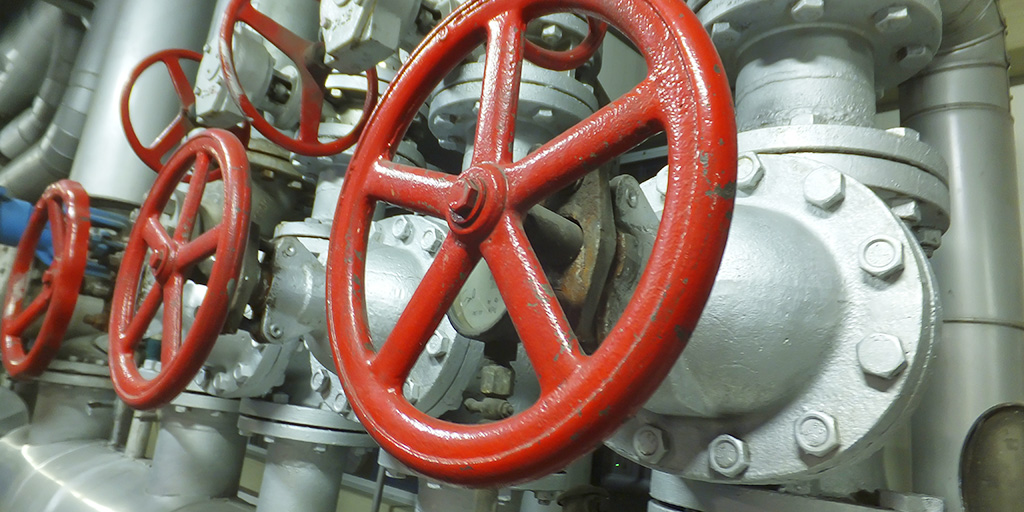Too Hot to Handle: Thermographic Imaging and Industrial Asset Management

Enterprise asset management would not be possible without technological advancements that give industry leaders with asset-intensive operations unprecedented control over the machinery they use every day.
Yet apart from this newfound mastery of equipment vital to production, EAM-related tools should also, in part, remove some of the mystery of how machines work. While preventive maintenance may warn operators of a present, pressing deficiency or irregularity in a particular operation, investigation takes time, engineering know-how and maybe some trial and error before the root cause can be uncovered.
Infrared thermography, however, presents industrial businesses with an opportunity to learn more about the mechanical and electrical equipment they monitor with easily understood extrasensory perception.
What is thermography, and what can it do?
Infrared thermography, also called thermal imaging, is a method of detecting invisible infrared radiation, commonly emitted by warm objects, by way of a thermal imaging camera or other such capture device. Emissivity, or the value for the potential for infrared energy emission, is expressed by color. Dark hues represent low radiation and brighter ones indicate high radiation.
With infrared technology, asset managers can quickly ascertain which components give off unexpected heat signatures, then target those areas exclusively, either for investigation or schedule maintenance. Industrial applications for infrared thermal imaging grow by the day and cover certain use cases performed by cymatics or triboelectric sensors as well. Many businesses already use thermography for the following:
- Detecting a lack of lubrication at bearing
- Showing operational stresses caused by weight imbalances
- Monitoring possibly faulty electrical equipment without direct contact
- Locating clogs in complex systems of pipes or ventilation ducts
- Assessing the efficiency of insulation
Thermography is also revolutionizing how industrial businesses build and quality test the products they make. Chemical producers use thermal imaging to quickly spot chemical reactions related to heat without introducing risk of contamination from contact equipment. Automobile manufacturers employ it to check the functionality of a car’s electrical accessories. Injection molders place plastic products under thermographic sensors to study heat distribution across a mold or time-efficient cooling methods.
As you can see, industries everywhere are experimenting with how this powerful technology offers new insight into key operations. But what about its applications when building a robust EAM strategy?
Predictive analysis without interruption
Although thermographic images are complex pieces of information, advancements in EAM solutions can convert these images into bits of usable data to develop baseline readings for crucial components or even fuel predictive analytics. And because the technology itself relies on active assets for proper readings, thermography never interferes with businesses as usual. General machine monitoring with thermal imaging requires no downtime.
"Machine monitoring with thermal imaging requires no downtime."

Is a closed valve really closed? Thermography can give you a definitive answer.
Integration with drone tech
In many current cases, infrared oversight doesn’t even need human intervention. As thermal imaging technology continues to miniaturize, its deployment in drones will become more viable for businesses seeking to invest in low-cost unmanned asset monitoring.
It’s only a matter of time before thermal imaging becomes the standard for industrial-sector drone operations as they pertain to EAM. Tethered or untethered drones can capture quick readings and report their findings back to asset managers, who can then leverage that information to power criticality rankings and smarter maintenance schedules. This application regiments detailed, investigative readings without sending costly maintenance professionals to remote locations, possibly unnecessarily. These technicians are instead utilized as needed to address verifiable asset malfunctions in a timely manner.
Risk-free Response
As they say, where there's smoke, there's fire, and the same can be said about infrared radiation and imminent disaster. Heat is a major red flag for mechanical and electrical assets. Even minor fluctuations can signal an upcoming failure. And as industrial engineers and equipment operators know well, unpredictable machinery threatens site safety. Thermography puts those monitoring operational excellence at a risk-free distance while still gathering the kinds of information that used required direct contact.
Thermographic imaging has the power to catch issues before they aggravate into full-blown failures, thereby allowing asset management and maintenance teams to respond proactively rather than reactively.
When you can see more, you can do more. Thermography enhances predictive maintenance strategies with affordable, user-friendly tools that embody everything EAM stands for: asset reliability, safety and actionable intelligence.